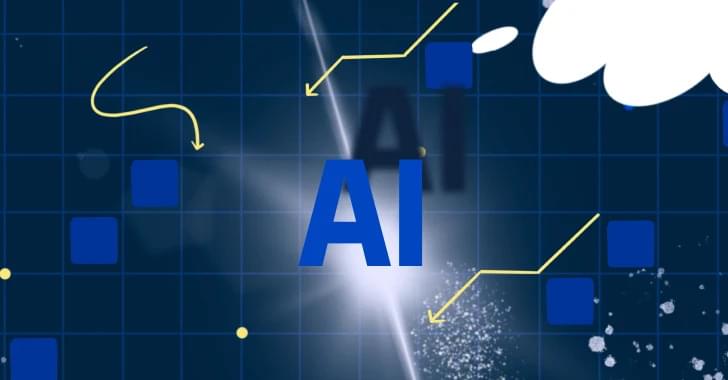Reco uncovers shadow AI in SaaS, tackling risks like excessive permissions and data leaks. Real-time security detection ensures protection.





“By compromising developer accounts, attackers not only exfiltrate intellectual property but also gain access to cryptocurrency wallets, enabling direct financial theft,” the company said. “The targeted theft of private and secret keys could lead to millions in stolen digital assets, furthering the Lazarus Group’s financial goals.”
The malware architecture adopts a modular design and is flexible, and capable of working across Windows, macOS, and Linux operating systems. It also serves to highlight the ever-evolving and adaptable nature of nation-state cyber threats.
“For North Korea, hacking is a revenue generating lifeline,” Sherstobitoff said. “The Lazarus Group has consistently funneled stolen cryptocurrency to fuel the regime’s ambitions, amassing staggering sums. With Web3 and cryptocurrency industries booming, Operation 99 zeroes in on these high-growth sectors.”

Over 660,000 exposed Rsync servers are potentially vulnerable to six new vulnerabilities, including a critical-severity heap-buffer overflow flaw that allows remote code execution on servers.
Rsync is an open-source file synchronization and data transferring tool valued for its ability to perform incremental transfers, reducing data transfer times and bandwidth usage.
It supports local file systems transfers, remote transfers over secure protocols like SSH, and direct file syncing via its own daemon.

A severe flaw in the W3 Total Cache plugin installed on more than one million WordPress sites could give attackers access to various information, including metadata on cloud-based apps.
The W3 Total Cache plugin uses multiple caching techniques to optimize a website’s speed, reduce load times, and generally improve its SEO ranking.
The flaw is tracked as CVE-2024–12365 despite the developer releasing a fix in the latest version of the product, hundreds of thousands of websites have still to install the patched variant.
IonQ fired the first shot in the M&A opportunities for quantum startups back in 2021, becoming the first publicly traded pure-play quantum computing company. In late 2024, IonQ filed to acquire Qubitekk as part of its strategy to apply distributed computer development as a means to progress toward a CRQC computer in data centers.
I predict that IonQ, among others in the space, has just begun its M&A program.
Expect to see acquisitions, mergers and joint ventures across geographies in the coming year, with several interesting possibilities in Europe.
Leading A Government-Wide Response To Long COVID — Dr. Ian Simon, Ph.D. — Director, Office of Long COVID Research and Practice, Office of the Assistant Secretary for Health (OASH), U.S. Department of Health and Human Services (HHS)
Dr. Ian Simon, Ph.D. is the Director for the Office of Long COVID Research and Practice (https://www.hhs.gov/longcovid/index.html), in the Office of Science and Medicine, in the Office of the Assistant Secretary for Health at the U.S. Department of Health \& Human Services.
The Office of Science and Medicine harnesses the power of collaboration, scientific analysis, data-driven innovation, and emerging technologies for advancing initiatives across the Department, including not just Long COVID, but in the areas of behavioral health, health equity, kidney disease, infection-associated chronic conditions, mother-infant dyad, sickle cell disease, and traumatic brain injury.
Previously Dr. Simon was the Assistant Director for Health Strategy and Biopreparedness at the White House Office of Science and Technology Policy, where he led pandemic prevention and biosecurity policy priorities. Most recently, he was the Senior Advisor to the Director of NIH’s National Institute of Allergy and Infectious Diseases (NIAID).
Prior to working at NIAID, Dr. Simon was the Assistant Director of the Institute for Defense Analyses (IDA) Science and Technology Policy Institute. In that role, he specialized in developing policy initiatives including bioeconomy, STEM education, pandemic preparedness, biosecurity, and international S\&T cooperation.

For humans, the most important star in the universe is our sun. The second-most important star is nestled inside the Andromeda galaxy. Don’t go looking for it—the flickering star is 2.2 million light-years away, and is 1/100,000th the brightness of the faintest star visible to the human eye.
Yet, a century ago, its discovery by Edwin Hubble, then an astronomer at Carnegie Observatories, opened humanity’s eyes as to how large the universe really is, and revealed that our Milky Way galaxy is just one of hundreds of billions of galaxies in the universe ushered in the coming-of-age for humans as a curious species that could scientifically ponder our own creation through the message of starlight. Carnegie Science and NASA are celebrating this centennial at the 245th meeting of the American Astronomical Society in Washington, D.C.
The seemingly inauspicious star, simply named V1, flung open a Pandora’s box full of mysteries about time and space that are still challenging astronomers today. Using the largest telescope in the world at that time, the Carnegie-funded 100-inch Hooker Telescope at Mount Wilson Observatory in California, Hubble discovered the demure star in 1923. This rare type of pulsating star, called a Cepheid variable, is used as milepost markers for distant celestial objects. There are no tape-measures in space, but by the early 20th century Henrietta Swan Leavitt had discovered that the pulsation period of Cepheid variables is directly tied to their luminosity.
In the years following the launch of NASA’s Hubble Space Telescope, astronomers have tallied over 1 trillion galaxies in the universe. But only one galaxy stands out as the most important nearby stellar island to our Milky Way—the magnificent Andromeda galaxy (Messier 31). It can be seen with the naked eye on a very clear autumn night as a faint cigar-shaped object roughly the apparent angular diameter of our moon.
A century ago, Edwin Hubble first established that this so-called “spiral nebula” was actually very far outside our own Milky Way galaxy —at a distance of approximately 2.5 million light-years, or roughly 25 Milky Way diameters. Prior to that, astronomers had long thought that the Milky Way encompassed the entire universe. Overnight, Hubble’s discovery turned cosmology upside down by unveiling an infinitely grander universe.
Now, a century later, the space telescope named for Hubble has accomplished the most comprehensive survey of this enticing empire of stars. The Hubble telescope is yielding new clues to the evolutionary history of Andromeda, and it looks markedly different from the Milky Way’s history.